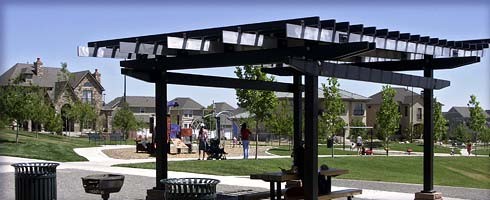Redevelopment of the former Lowry Air Force Base into a mixed-use, master planned community.
The Francis B. Lowry Airfield, first established in 1937, was and is an integral part of America’s history. The War Department tasked Lowry Airfield with training more than 55,000 men annually for World War II combat. Following WWII, Lowry Airfield became Lowry Air Force Base and continued to serve the Air Force into the 1990s.
The Lowry Air Force Base was closed in 1994 as part of a national downsizing of the US armed forces. In order to ensure that the almost 1,900-acre site would be efficiently and suitably re-incorporated into the surrounding community, the Denver and Aurora City Councils approved the Lowry Community Reuse Plan. The Lowry Redevelopment Authority (LRA) was also created to acquire and redevelop the base. The Reuse Plan called for a mixed-use, master planned community consisting of tree-lined boulevards and quiet residential streets. The community would also carefully integrate office and commercial space into Denver’s newest neighborhood — to be known simply as Lowry.
In order for Lowry to be developed as defined in the Reuse Plan, the LRA needed a variety of funding sources to complete urban infrastructure and open-space projects. In addition to numerous federal grants and the revenues from land sales, the LRA issued $72.5 million in TIF bonds through an agreement with DURA. Bond proceeds were used to help finance building demolition, construction of roadways, parks, open space, schools and other public improvements at Lowry.
The project was completed in 2009. Today, Lowry is one of Denver’s premier neighborhoods and a national model of sustainable development. More than 25,000 people live, work and go to school there. Now thriving, the planned community contains homes, schools and colleges, nonprofit organizations and more than 100 employers.
One of the earliest and most successful base closure reuse efforts, Lowry is a model for other cities facing similar challenges and has received numerous awards, including the 1999 Sustainable Community Award from the US Conference of Mayors and the Department of Housing and Urban Development’s Secretary’s Award for innovative collaboration and sustainable growth.
